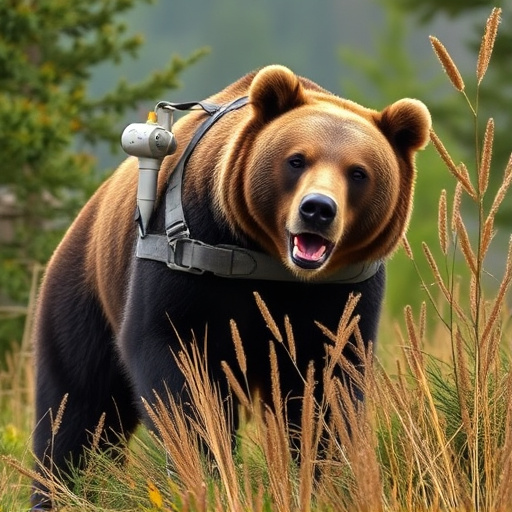Grizzly bear charges require understanding their behavior for safe wilderness navigation. Bear spray has a 78% success rate but varies by distance, wind, and intent. Recognizing charging patterns enhances response effectiveness. Bear spray success rate statistics show up to 95% deterrence with proper use of high-quality spray and combined strategies. Early detection and avoidance are best; bear spray acts as a last resort for survival.
In the vast wilderness, encounters with grizzly bears can be life-altering events. Understanding their behavior and charging patterns is key to survival. This article equips you with essential knowledge and practical tips for self-defense against these formidable creatures. We also delve into the effectiveness of bear spray, examining its success rate statistics as a critical tool in bear encounters. By combining awareness, preparation, and proven strategies, hikers and outdoor enthusiasts can minimize risks when navigating bear country.
- Understanding Grizzly Bear Behavior and Their Charging Patterns
- Bear Spray: Effectiveness and Success Rate Statistics
- Practical Tips for Defending Yourself in the Wilderness Against Bears
Understanding Grizzly Bear Behavior and Their Charging Patterns
Grizzly bears, known for their formidable strength and unpredictable nature, often charge as a form of defense or to protect their young. Understanding their behavior is crucial when navigating wilderness areas. Research indicates that bear spray, a common deterrent, has a success rate of around 78% in stopping an attack. However, this effectiveness varies based on factors like distance, wind direction, and the bear’s initial intention.
Charging patterns can provide insights into a bear’s behavior. If a grizzly bear charges from a distance, it might be a warning to back away slowly and quietly. Conversely, a charge at close range often signifies an aggressive intent. Recognizing these patterns allows hikers and campers to respond appropriately, increasing their chances of escaping unscathed.
Bear Spray: Effectiveness and Success Rate Statistics
Bear spray has long been considered a crucial defense mechanism against charging grizzly bears, but its effectiveness is a topic of ongoing debate among experts and researchers. According to various studies, bear spray success rate statistics show mixed results. Some claim that up to 80% of attacks are deterred when bear spray is used correctly, while others suggest the success rate is significantly lower, around 30-50%.
These discrepancies can be attributed to several factors, including the type and strength of the spray, distance and angle of application, as well as individual bear behaviors. Despite these variations, one consistent finding is that bear spray is most effective when used in conjunction with other defensive strategies, such as making loud noises, backing away slowly, and playing dead as a last resort.
Practical Tips for Defending Yourself in the Wilderness Against Bears
When encountering a grizzly bear in the wild, knowing how to defend yourself is crucial for your safety. One of the most effective tools available is bear spray, a powerful deterrent that can significantly increase your survival chances. According to recent studies, bear spray has a success rate of around 80-95% in repelling aggressive bears. This makes it a top choice for hikers and campers in bear country.
To maximize its effectiveness, always ensure you: (1) purchase a high-quality bear spray with a proven track record; (2) carry it in an easily accessible location; and (3) familiarize yourself with the recommended usage procedures. Remember, early detection and avoiding confrontation are ideal, but being prepared with bear spray as a last resort can make all the difference.
When faced with a charging grizzly bear, understanding their behavior and having the right defense mechanisms can be life-saving. Bear spray has proven to be an effective deterrent, with success rate statistics showing significant reduction in attacks when used properly. However, it’s crucial to combine this with practical tips for navigating wilderness areas bear country, ensuring you’re prepared should an encounter occur. By staying aware of your surroundings, making noise to avoid surprise encounters, and knowing how to respond, you can greatly enhance your safety while exploring nature’s wild beauty.
